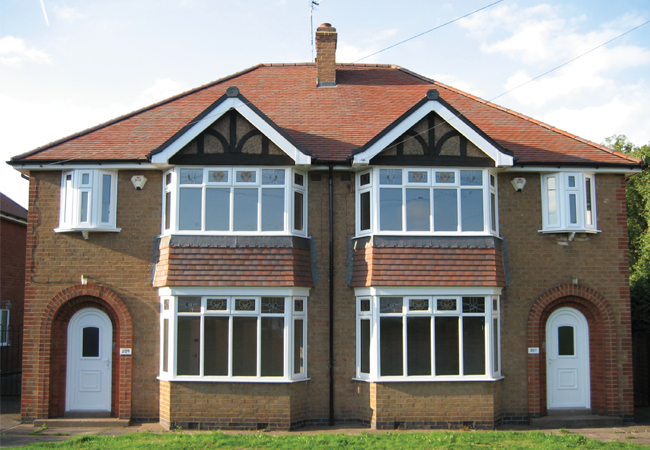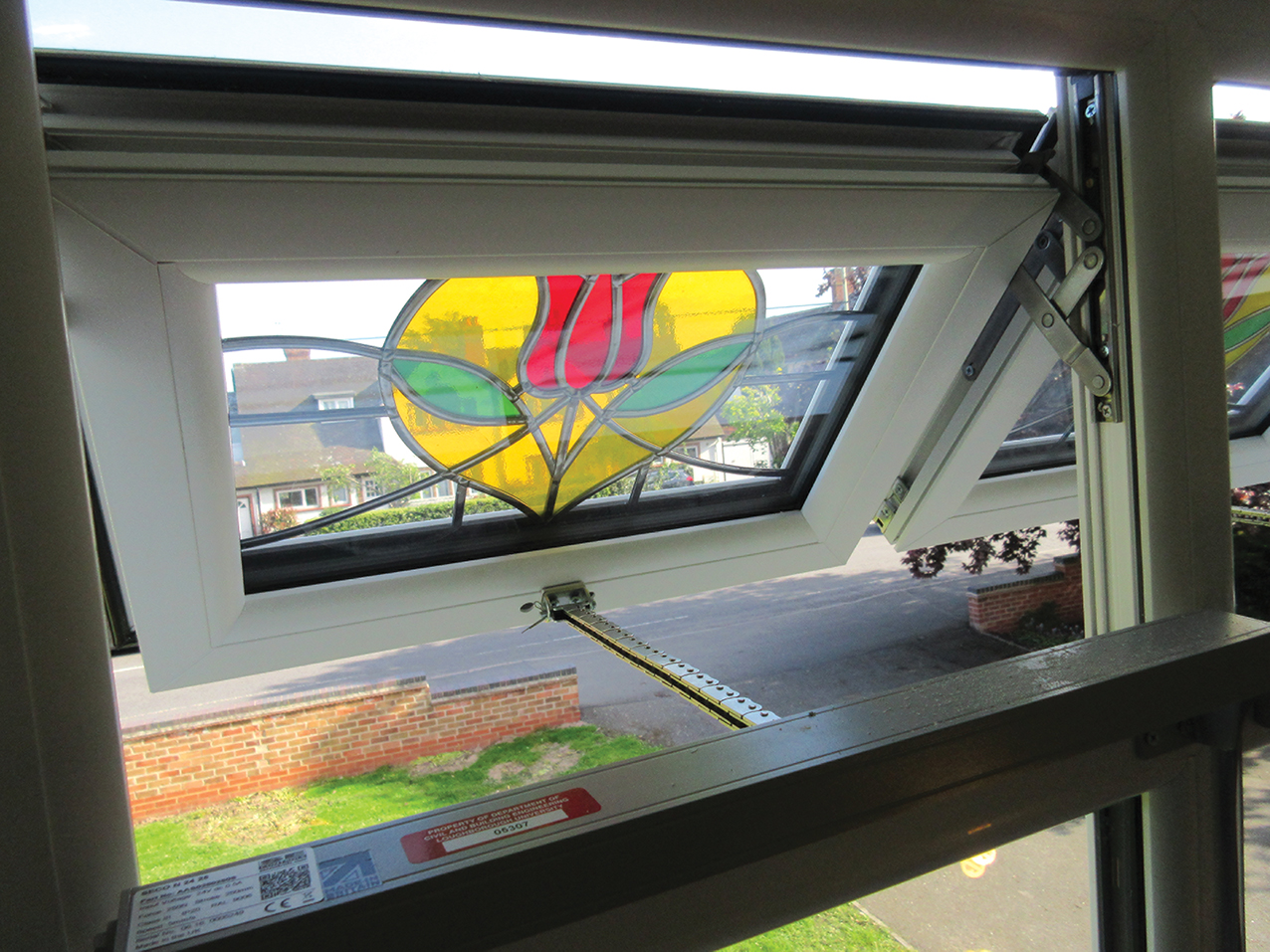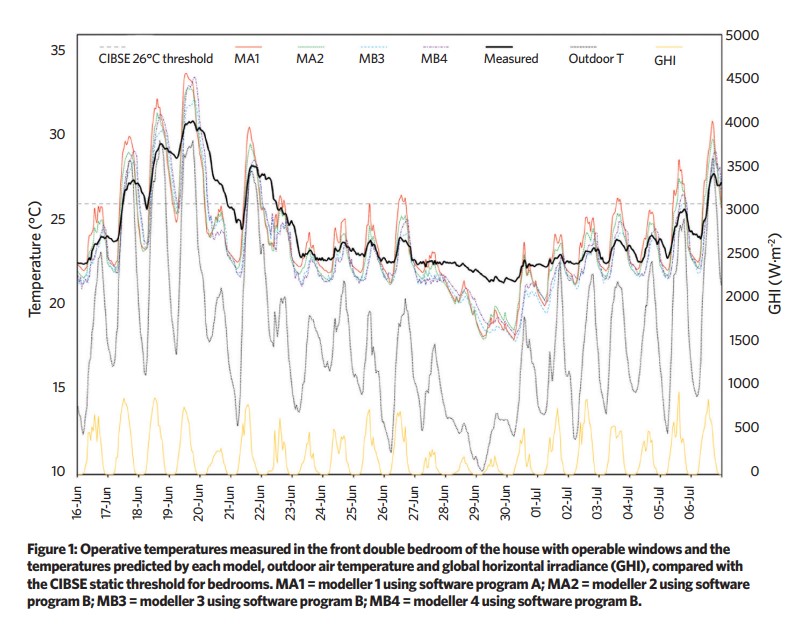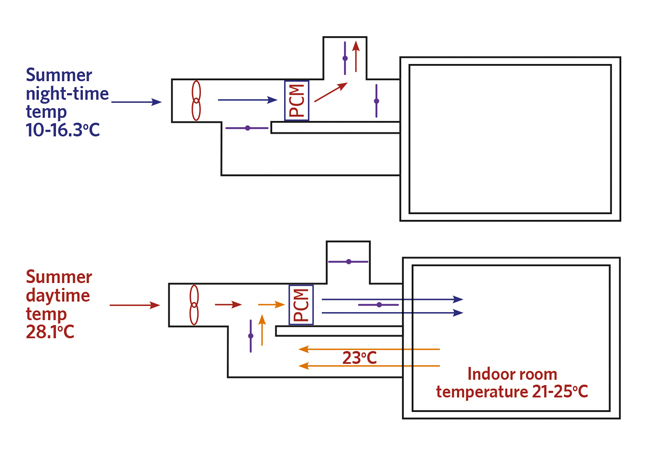
The 1930s test houses in the East Midlands
Reducing the risk of summertime overheating in UK homes is important because of the health implications of high indoor temperatures, and the increase in electricity demand if more air conditioning is used. The Committee on Climate Change has identified dynamic thermal modelling (DTM) programs and CIBSE Technical Memoranda TM52 and TM59 as potential enablers of new standards or regulation to reduce overheating risk. To be viable, DTM programs must steer designers towards low-risk designs by predicting correctly the relative overheating experienced by alternative design proposals.
The 2020 Carter Bronze medal-winning research paper Predictions of summertime overheating: comparison of dynamic thermal models and measurements in synthetically occupied test houses1 compared DTM program predictions of summertime temperatures with those measured in the matched pair test houses at Loughborough University. It was a collaborative empirical validation and inter-model comparison between four modellers and a monitoring and validation team.
The four modellers were all employed in professional organisations and none was involved in the experimental work, or had prior knowledge or experience of the test houses. Each chose a CIBSE AM11-compliant DTM program that they use regularly in their work and which is widely used in industry. Two modellers selected versions of one program, while the other two selected versions of a different one.
The test houses are two nominally identical, semi-detached homes, built in the 1930s in the East Midlands, UK. They are south facing, with windows on the east and west façades covered and insulated so that solar gains are consistent. The houses have the same uninsulated cavity-wall construction, a suspended timber ground floor with a ventilated void below, and ventilated roof space. Both were retrofitted with 300mm of insulation above the first-floor ceiling and double glazing to all doors and windows, with identical operable elements.
The facility is fully instrumented, with calibrated sensors inside and out. ‘Synthetic occupants’ – systems for the automation and control of internal heat gains (electrical heaters), internal doors, windows, blinds and curtains – allow accurate and repeatable side-by-side experiments to be carried out. The houses have been used in numerous research projects on topics including mitigation of summertime overheating, model validation, thermal performance evaluation, thermal comfort, ventilation, energy-saving performance, and energy flexibility.
A side-by-side overheating experiment was carried out in the houses from 16 June to 6 July 2017. There was a spell of hot weather during this period, which caused overheating and tested the models’ reliability for making accurate predictions. Heat-gain profiles in each house were set to mimic those recommended in TM59. Blinds and curtains were opened in accordance with the TM59 sleeping schedule.
Windows stayed closed in the East house but were opened in the West house if the room air temperature exceeded 22°C and it was occupied (according to TM59 occupancy profiles) and closed if the air temperature fell below 22°C or the room was unoccupied.
Peak temperatures of the East house reached 28.9°C in the living room and 31.9°C in the front double bedroom. With operable windows, peak temperatures in the West house were only slighter cooler, at 28.5°C (living room) and 30.9°C (front bedroom).

Inside of the test houses, showing the automated window opening
Predictions were made in two phases: blind and open. In the blind phase, modellers were given only information on the house construction, geometry, synthetic occupancy, heat-gain profiles and weather, and asked to make predictions of indoor temperature without knowing the measured indoor temperatures. In the open phase, the modellers were given indoor temperature data, revised their models, and made new predictions. In each phase, they predicted:
1. Indoor operative temperature during the test-house experiments for the empirical validation using weather measured locally
2. Annual overheating hours following TM59 methodology for inter-model comparison using the CIBSE DSY1 file for the 2020s, high emissions, 50% percentile scenario for the nearest location to the test houses.

Empirical validation
The model predictions deviated most from measurements on the warmest days – precisely when predictive accuracy is most needed. On these days, the peak temperatures predicted by all four models were higher than measured in both houses (see Figure 1). For example, on the warmest day, and with windows open, the predicted peak temperatures exceeded measured temperatures by 1.4°C to 3.3°C in the front double bedroom, and 2.2°C to 4.6°C in the living room. As a result, in both houses, the overheating threshold exceedance hours during occupied hours in living rooms were predicted higher than measured.
The model predictions deviated most on the warmest days – precisely when accuracy is most needed
The models also tended to over-predict the diurnal swing in indoor temperature. Consequently, in the house with windows closed, all the models predicted fewer sleeping hours in the bedroom over 26°C than measured. For the house with windows open, modelled and measured sleeping hours in the bedrooms over 26°C were similar for two of the bedrooms. In the open phase, all four modellers improved the prediction of hourly room temperatures during warm weather, suppressing – but not eliminating – the over-prediction of peak temperatures and diurnal swing. The prediction of overheating hours in the living rooms improved, but the differences between modelled and measured overheating hours in the bedrooms were largely unchanged.
Inter-model comparison
It is often important to know whether the difference in overheating as a result of a design change is reliably predicted. Comparing annual predictions of indoor temperature with windows opening, following the TM59 protocol, with indoor temperatures with windows always closed showed that all models were consistent in their prediction that overheating in the bedroom would decrease with windows open.
There was variability in the predicted decrease in overheating hours, however. Quantifying the inter-model variability revealed that the predicted hours over the threshold might change if a different model or modeller were used to undertake the same analysis. So, when predictions are close to the overheating threshold, assessment of whether the overheating criteria are passed or failed is unreliable.
It is important that the uncertainty in predictions is accommodated if overheating risk assessment using dynamic thermal models becomes a regulatory requirement.
Further research is required to understand the causes of variation between model predictions of overheating and the reason for the differences from the measured temperatures. The test-house plans, modelling guidance, weather and temperature data used by the modellers in this study are publicly available (Roberts et al, 2019b).2 CJ
References:
1 Roberts, B M, Allinson, D, Diamond, S, Abel, B, Das Bhaumik, C, Khatami, N and Lomas, K J, (2019a). Predictions of summertime overheating: comparison of dynamic thermal models and measurements in synthetically occupied test houses. BSERT, 40(4), pp.512-552.
2 Roberts, B M, Allinson, D and Lomas, K (2019b): Prediction of overheating in synthetically occupied UK homes: dataset for validating dynamic thermal models of buildings. Loughborough University Figshare Dataset. doi.org/10.17028/rd.lboro.8094575.v1




